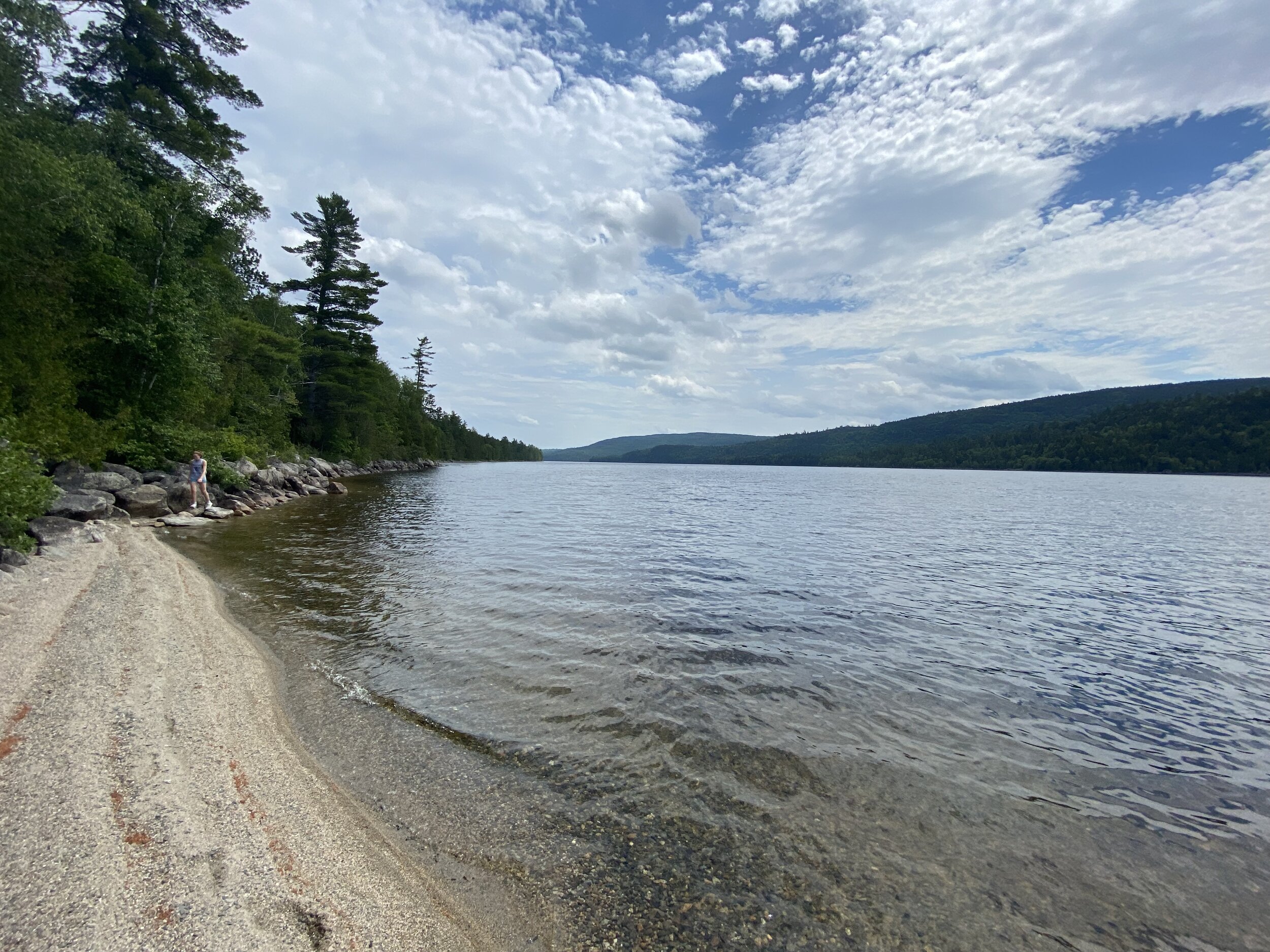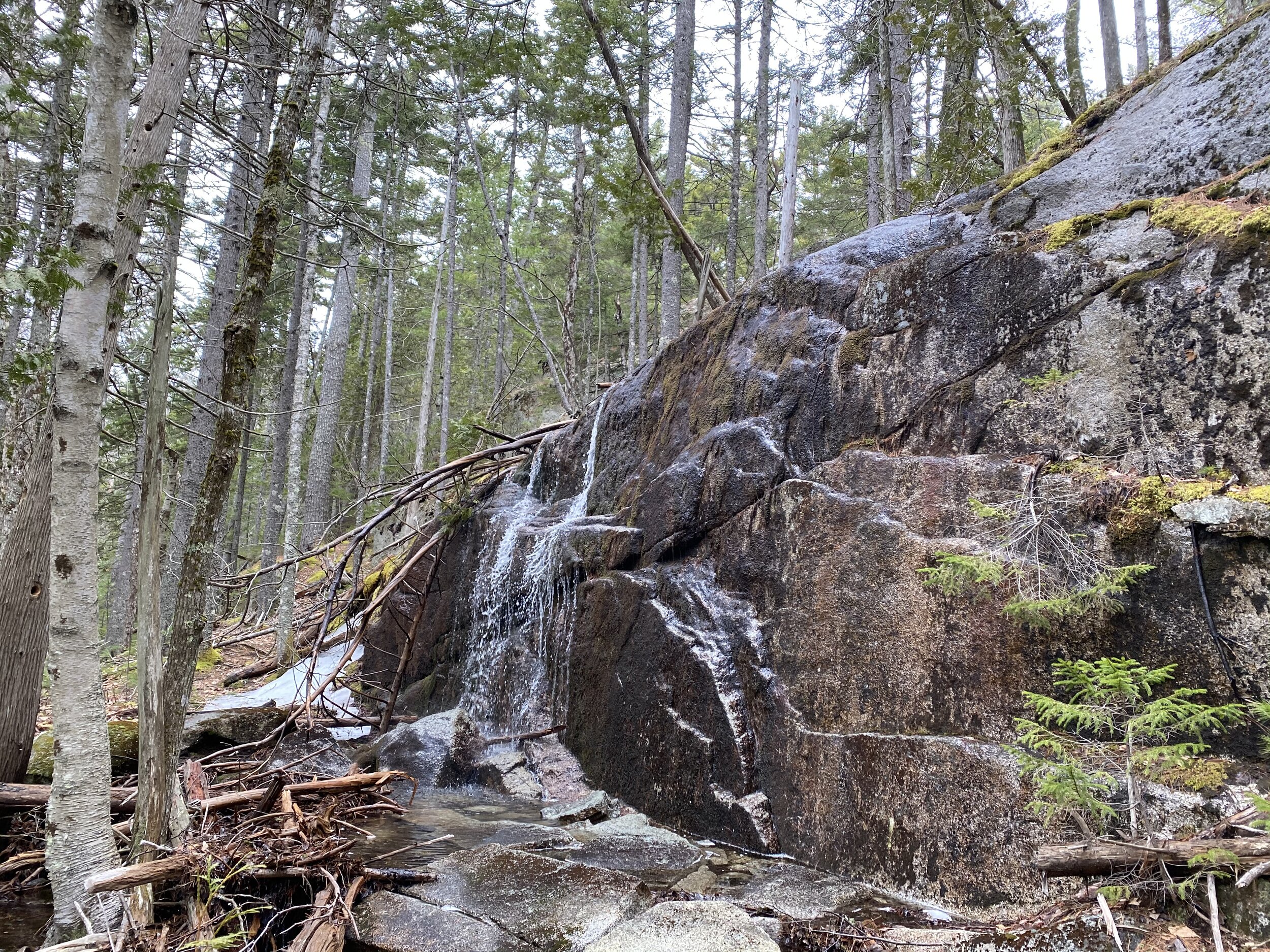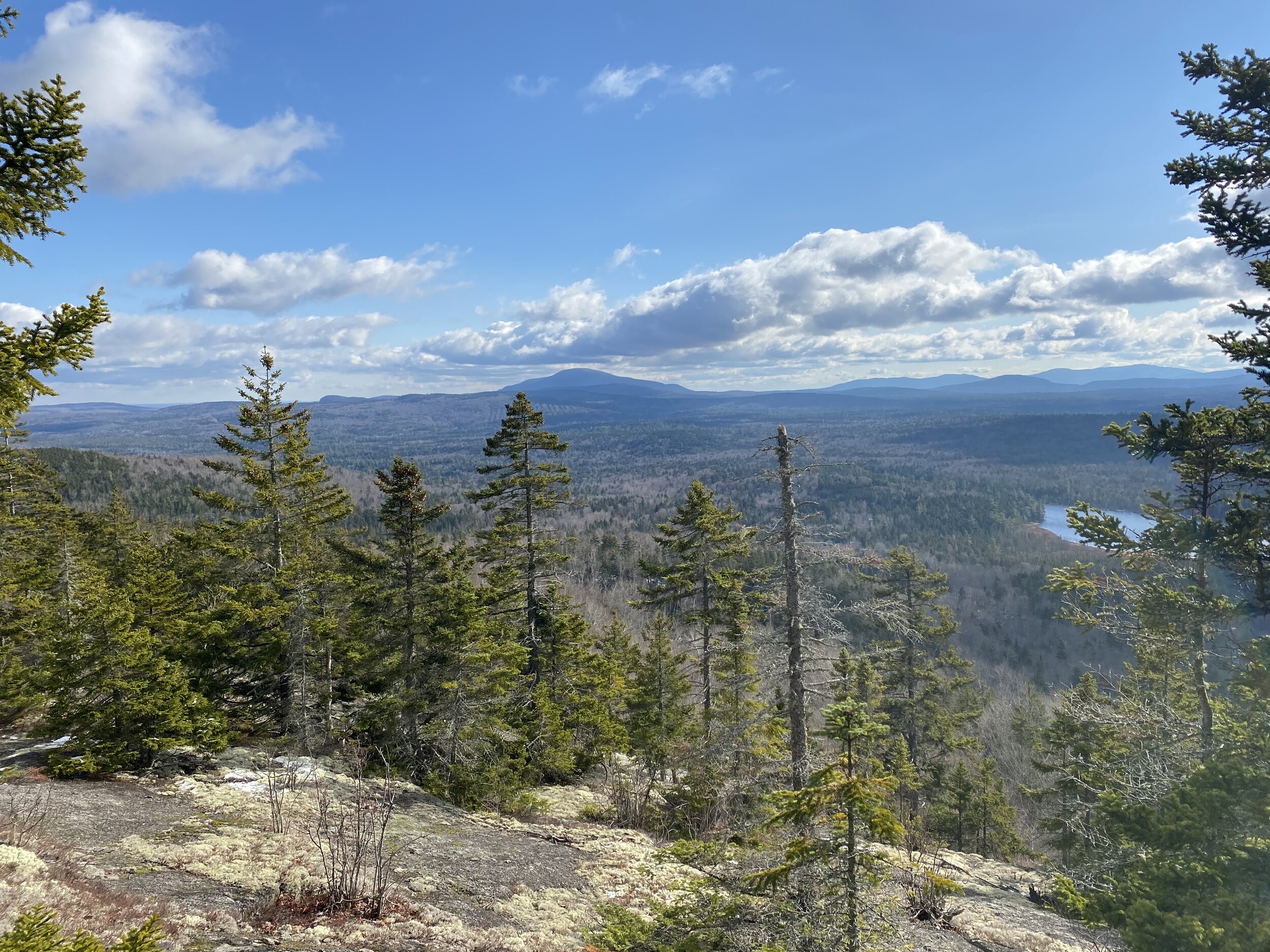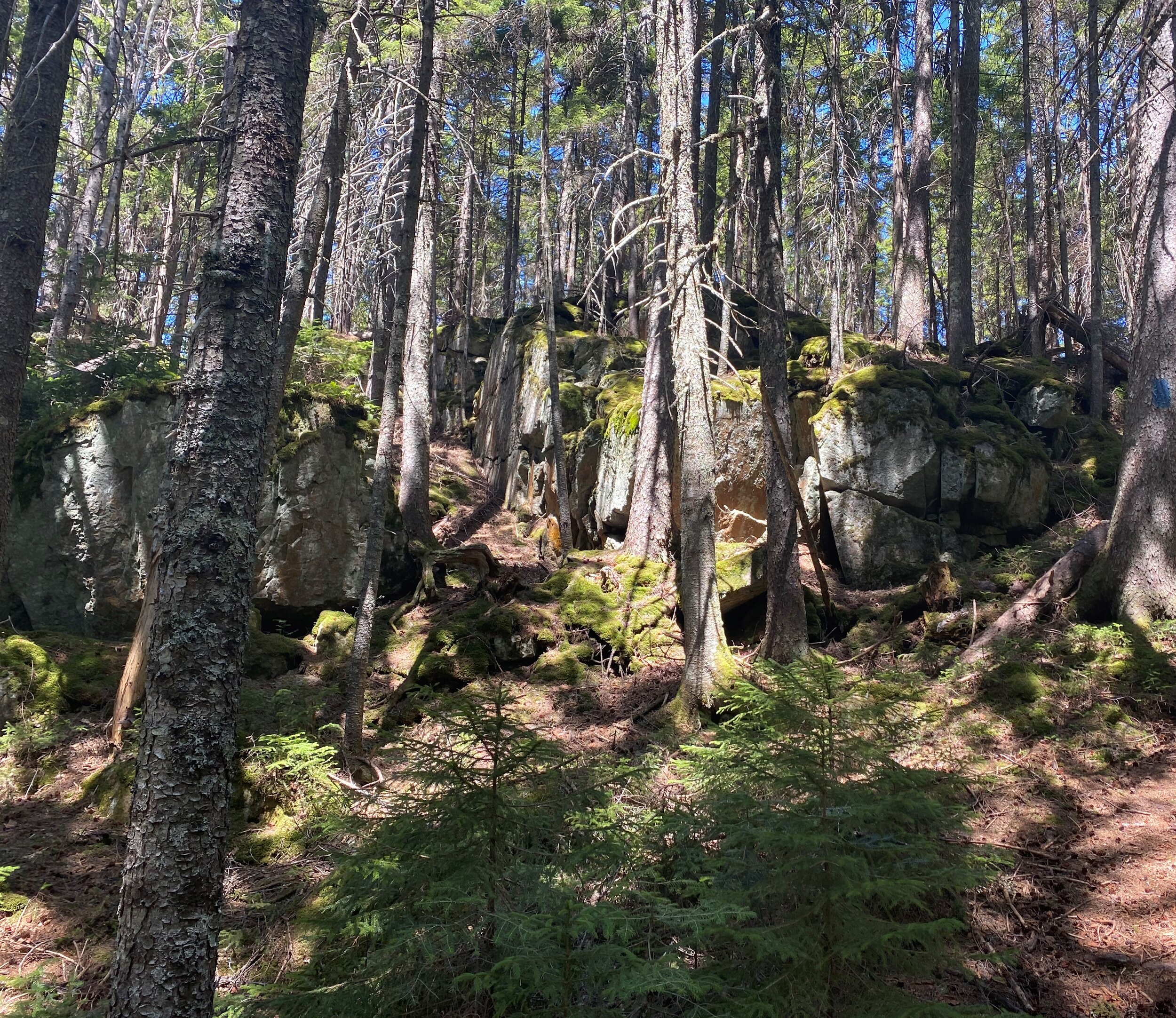The east end of Indian Pond
Indian Pond is a remote and little visited lake at the southern end of AMC’s preserve in the Moosehead area. The hike is a 7.4 miles out and back with 1678 feet of climbing. The hike starts at the Third Mountain Trailhead along Chairback Road on the hill above Long Pond. You hike up to the Appalachian Trail, then descend the south side of the ridge and cross the valley to Indian Pond. The hike ends at the campsite on the shore of the lake.
As you can see from my photos, I did this hike before it snowed. But this is a good hike to do in the winter if you like breaking trail.
You can get to the trailhead from either Greenville or Brownville on the KI Road. Chairback Road leaves KI Road to the south at a point 1.0 mile west of the Gulf Hagas parking area. There’s a sign for Gorham Lodge at the intersection. Once on Chairback Road, drive 2.0 miles, passing the Henderson Brook trailhead and the turn for Gorham Lodge. Just past the Third Mountain Trailhead, there’s a parking area on the left.
The trailhead
The hike:
0.0 Third Mountain Trailhead.
0.9 Climb gently through a hardwood forest along a brook. Pass Gorham Loop Trail (a xc ski trail that loops back to the lodge).
nearing the AT on the climb
1.4 Switchback steadily up the ridge, including one ladder. The forest transitions from hardwoods to evergreens as the mountainside steepens. You cross the brook near its headwaters. The trail reaches the Appalachian Trail in the saddle between Third and Fourth Mountains.
1.5 Cross the AT and climb steeply to the crown of the ridge.
1.7 Descend through a hanging bog, across ledges, then more steeping through a rocky area with water flowing beneath the boulders to a small slide. From the slide you have a partial view to the south.
The bog in summer
Where the bog transitions to the bouldery descent
2.3 Descend steadily through bouldery forest beside a brook that tumbles over and between the boulders. Where the brook reaches the valley floor and relaxes into a wider, gentler flow, the trail bears right away from the brook.
3.2 Cross the valley floor. When the leaves are off the trees you have pretty good views of Third Mountain and especially Fourth Mountain. The trail follows an old woods road. Just when you think the trail is going to descend to the east end of Indian Pond—visible through the trees—the hike turns left (east) onto a yellow blazed trail, leaving the roadbed. (The roadbed actually never reaches the pond. It bears right and follows along the shore on a side hill high above the water.)
3.7 The trail wanders through the woods within sight of Indian Pond and reaches a campsite on the shore of the pond. The trail ends here.
Looking west across Indian Pond to Barren Mountain
To complete the hike, retrace your steps back to the trailhead. This hike offers different things in different seasons. When the leaves are off the trees, you get pretty good views in several places of the surrounding mountains and from the ridge (at the slide). In spring, the hardwood forest on the lower shoulder of the ridge and the valley floor are colorful with wildflowers. In winter, this hike offers an opportunity to break trail on a relatively easy mountainside. In spring and summer, the pond and the woods around it are a good place to find moose. This isn’t the most spectacular hike in the 100 Mile Wilderness, but it offers nice variety and great solitude.
Looking down the ladder
































































































































































































































